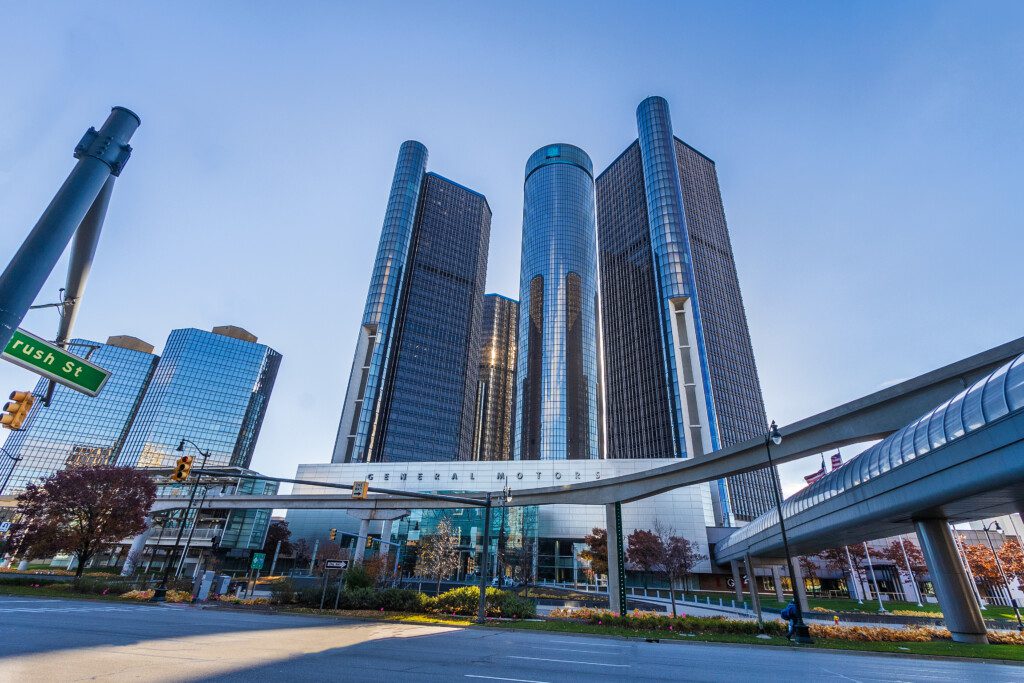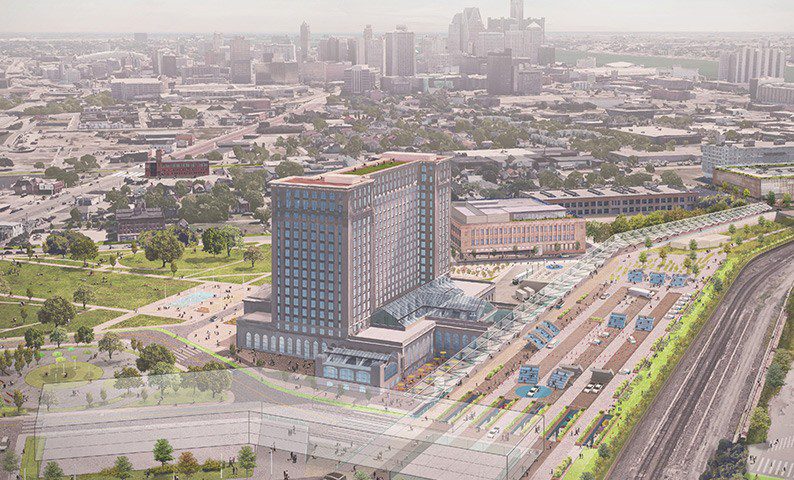December 18, 2023

Some say there has never been a more significant technological advancement in everyday life than the automobile. It plays a role in where we work, live, travel, and more. But what is the driving force behind the industry? Well, it’s right in our backyard.
The rich history of Detroit played a pivotal role in the growth and development of the automotive and mobility sector, and its critical role continues. While Detroit has risen and fallen with the industry, it became — and continues to be — the epicenter of the auto industry and mobility for several reasons. To truly understand where we are today, let’s take a step back in time.
 The first historical step in marking Michigan, and eventually Detroit, as an automotive hub was back in 1897 when Ransom Eli Olds founded Olds Motor Works — later named Oldsmobile — in Lansing, Michigan. Although this promoted the historical ties between Detroit and the automotive world, the automobile boom put Detroit on the map.
The first historical step in marking Michigan, and eventually Detroit, as an automotive hub was back in 1897 when Ransom Eli Olds founded Olds Motor Works — later named Oldsmobile — in Lansing, Michigan. Although this promoted the historical ties between Detroit and the automotive world, the automobile boom put Detroit on the map.
In 1903, Henry Ford founded the Ford Motor Company in Dearborn, Michigan. In 1908, Ford designed and began production of the Model T. That same year, William Durant founded General Motors. While Ford continued to set the world on its head and revolutionized the industry by introducing the assembly line in 1913, the number of active automobile manufacturers steadily dropped from 253 in 1908 to only 44 in 1929, with about 80% of the industry’s output accounted for by Ford, General Motors, and Chrysler, founded in 1925 by Walter P. Chrysler. The assembly line quickly became the norm, and the “Big Three” (Ford, General Motors, and Chrysler) called Detroit home by the 1920s.
In 1935, Detroit made waves again when the United Automotive Workers of America (UAW) was organized. From 1936 to 1937, the UAW led the first significant labor disruptions within the auto industry, including the 1936 sit-down strike coined “the strike heard around the world” at the Flint General Motors’ car plant. Over 136,000 workers took part.
Between the late 1940s and 1960s, the Detroit auto industry underwent a significant transformation characterized by the restructuring and automation of assembly-line jobs. Simultaneously, manufacturing jobs were decentralized, spreading throughout the Midwest and Sunbelt regions. This shift contributed to a notable decline in the Detroit auto industry, a trend exacerbated by the energy crisis of the 1970s.
The significance of the automobile industry in shaping historical events was clear, particularly during wartime. The industry was crucial in manufacturing military vehicles and war materials in the First World War. Similarly, during World War II.

General Motors Renaissance Center
Post-World War II, the American economy witnessed a remarkable boom, accompanied by a surge in consumer demand for automobiles. Detroit’s “Big Three” automakers reaped the benefits of this economic upswing, earning the city the title of the “Motor City” because of its prominent role in automotive production. The city’s economic growth and prosperity became intricately linked to the success of the automotive industry.
The city made strategic investments in the mid-20th century to bolster the expanding automotive industry. Initiatives included the development of an extensive network of roads and highways, providing crucial transportation arteries for the burgeoning sector. Later, key landmarks like the Detroit-Windsor Tunnel and the Ambassador Bridge were established, fostering seamless international trade with Canada. These infrastructure enhancements not only facilitated the efficient movement of goods and materials, but also contributed to the city’s emergence as a vital player in the global automotive supply chain.
The late 20th-century wave of globalization brought about a new dimension of challenges, as foreign automakers intensified their presence, heightening competition. In response, Detroit’s automakers underwent significant restructuring efforts to stay viable in the global marketplace.
The city faced another setback in the early 21st century during the Great Recession when General Motors and Chrysler declared bankruptcy, prompting a government-led restructuring.
In 2013, Detroit faced another defining moment as it filed for bankruptcy, grappling with financial challenges and urban decay. This marked a turning point for the city, prompting comprehensive efforts to rejuvenate and reshape its future.
In recent years, Detroit has shifted its focus towards innovation, particularly within the automotive sector—including Ford’s purchase and renovation of the beloved Detroit landmark, Michigan Central Station. Michigan Central will include new and revitalized buildings, multiple outdoor plazas, open spaces, and commercial public space and be a hub for Ford’s future mobility research.

Michigan Central. Photo credit: Ford Motor Company
Embracing the changing landscape, the city has placed a growing emphasis on electric and autonomous vehicles, aspiring to position itself at the forefront of the next generation of mobility solutions. This strategic move towards innovation reflects a forward-looking vision aimed at not only revitalizing the automotive industry but also cementing Detroit’s role as a hub for innovative technologies and advancements in transportation.
Despite these formidable challenges, Michigan proudly maintains its status as the world’s auto capital. As of 2021, the state served as the headquarters for 26 original equipment manufacturers or technology centers, with 20% of the workforce employed in the automotive or mobility industries.
Written by Megan Childress